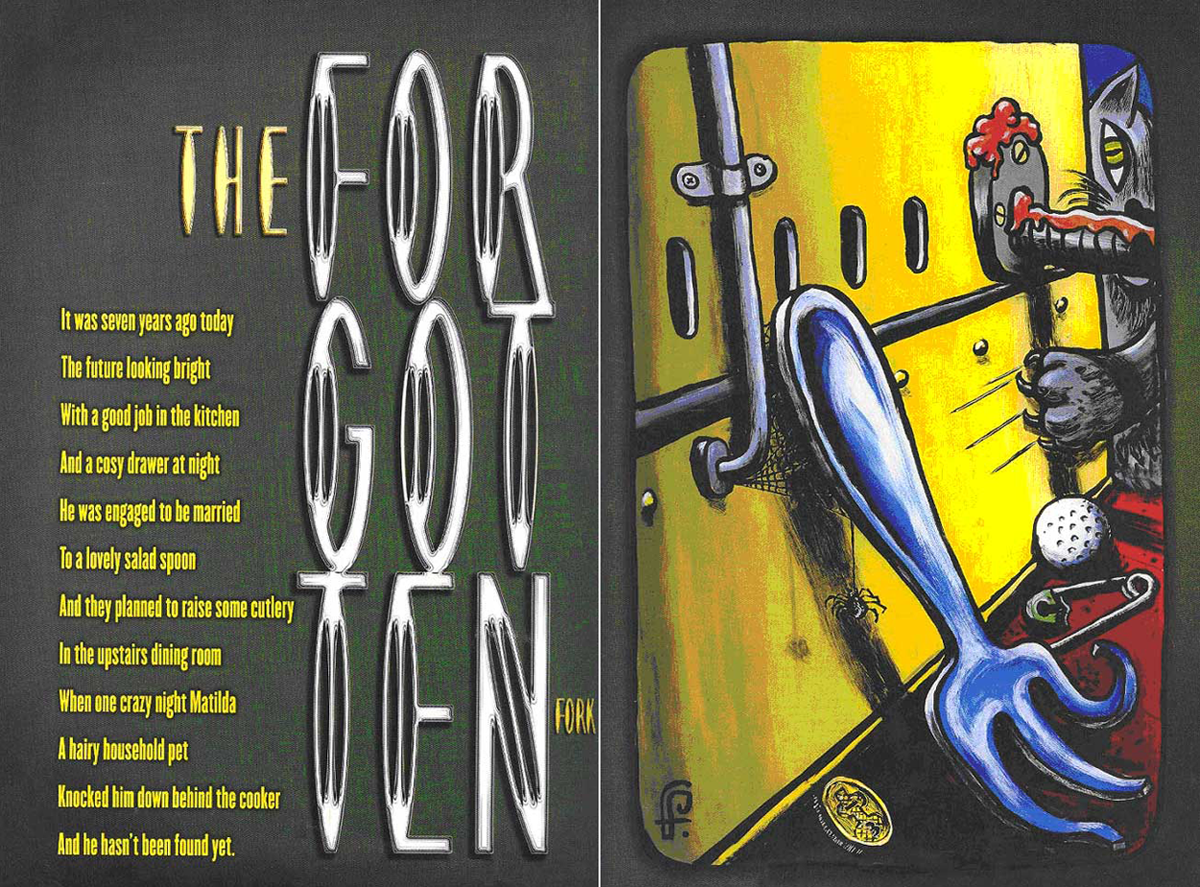The Forgotten fork I
0
Overview
Using this Resource
Connecting to the Curriculum
Marking Student Responses
Further Resources
This task is about visual techniques and how they add meaning to a poem.
This resource uses a presentation from 'The Underwater Melon Man' by Flaws, Baysting and Dasent.
Read the poem and look closely at the illustration to help you answer the following questions.

Task administration:
This task can be completed with pencil and paper or online,
The book used in this resource is "The Underwater Melon Man and other unreasonable rhymes" by Flaws, F., Baysting, A., and Dasent, P., (1999), produced by Monkey Biz Music Ltd. (Book and CD).Flaws wrote and illustrated the poem being used in this resource. Listening to the music that goes with this poem and picture would add another dimension and further understandings.
This resource is about viewing and thinking critically and exploring language.
Prior teaching needed
Students should have explored the techniques of perspective, alliteration, personification, and foreground and background before attempting either part of this resource. Some ARB resources focusing on these techniques are:
- alliteration: Sea-dog Magic stuff
- mood: Speech bubbles
The resource could be done either in groups or individually, depending on the nature of the assessment taking place. If the task is done in groups, to facilitate a greater exchange of ideas, one student from each group could move to another group to share their group's responses. Likewise, each group shares theirs with the "ambassador", followed by a discussion of both. The "ambassador" then returns to their home group to share the ideas gained from their "mission". All the ideas could be collated on a class chart.
Copyright:
Flaws, F., Baysting, A., and Dasent, P., (1999). The Underwater Melon Man and other unreasonable rhymes. Monkey Biz Music Ltd. (Book and CD).
Permission granted for use August, 2004.
Level:
4
Curriculum info:
Keywords:
Description of task:
Students identify the visual techniques used within a static image and describe how they support the meaning of the written text.
Answers/responses:
| Y9 (04/2005) | ||
| a) |
Any 1 of:
|
moderate |
| b) |
Any 3 of:
|
3 ideas – moderate
2 ideas – very easy
1 idea – very easy
|
| c) |
Any 3 of:
|
3 ideas – very difficult
2 ideas – moderate
1 idea – easy
|
| d) | Perspective (3-D was accepted.) | very difficult |
| e) |
Any 1 of:
|
moderate
|
| f) |
Any 1 of:
|
difficult |

